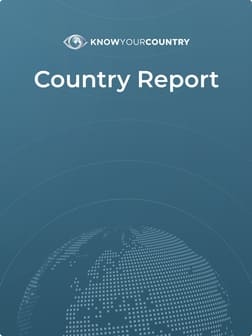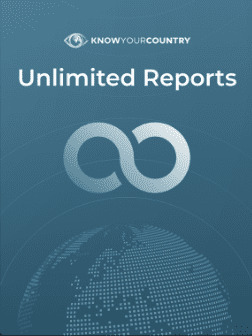
Samoa Country Summary
Sanctions
No
FATF AML Deficient List
No
Terrorism
Corruption
US State ML Assessment
Criminal Markets (GI Index)
EU Tax Blacklist
Offshore Finance Center
Background Information
Anti Money Laundering
FATF Status
Samoa is not on the FATF List of Countries that have been identified as having strategic AML deficiencies
Compliance with FATF Recommendations
The last follow-up Mutual Evaluation Report relating to the implementation of anti-money laundering and counter-terrorist financing standards in Samoa was undertaken in 2018.According to that Evaluation, Samoa was deemed Compliant for 5 and Largely Compliant for 15 of the FATF 40 Recommendations. It was also deemed Highly Effective for 0 and Substantially Effective for 1 with regard to the 11 areas of Effectiveness of its AML/CFT Regime.
US Department of State Money Laundering assessment (INCSR)
Samoa was deemed a ‘Monitored’ Jurisdiction by the US Department of State 2016 International Narcotics Control Strategy Report (INCSR). Key Findings from the report are as follows: -
The Independent State of Samoa is not known to have major organized crime, fraud, or drug problems and due to the small size of the local economy and the banking sector, Samoa has not become a haven for money laundering or terrorism financing. There is no significant evidence of large scale public corruption or black market activity. The most common financial crimes within the jurisdiction appear to be low-level fraud and theft.
According to Samoan law enforcement, criminal organizations based in Hawaii and California are involved in the trafficking of cocaine and crystal methamphetamine into Pacific island nations, including Samoa. Additionally, South American and Australian-based organizations use the South Pacific islands as transshipment locations for cocaine being shipped from South America into Australia and New Zealand.
Samoa is an offshore financial jurisdiction administered by the Samoa International Finance Authority (SIFA). For entities registered or licensed under the various Offshore Finance Centre acts, there are no currency or exchange controls, and no foreign exchange levies payable on foreign currency transactions. No income tax or other duties, nor any other direct or indirect tax or stamp duty is payable by registered/licensed entities.
There are four locally incorporated commercial banks, supervised by the Central Bank. There is one casino in operation, and one additional license the government has yet to allocate. In addition, one local lottery is in operation.
EU Tax Blacklist
Samoa has harmful preferential tax regimes, does not apply the BEPS minimum standards and did not commit to addressing these issues by 31 December 2018.
On March 12, 2019, the EU Commission confirmed that Samoa had taken no commitments since the first blacklist adopted in 2017 and, therefore, it will remain on the list.
Sanctions
There are no international sanctions currently in force against this country.
Bribery & Corruption
Rating (100-Good / 0-Bad)
Transparency International Corruption Index N/A
World Governance Indicator – Control of Corruption 70
Economy
The Independent State of Samoa is a peaceful parliamentary democracy with a proud history of free press, an independent judiciary, and a strong record of protecting human rights. It has a population of approximately 200,000 and a nominal GDP of USD 844 million. Samoa became the 155th member of the World Trade Organization in May 2012, and it is a member of the Commonwealth. Samoa is experiencing a deep recession due in large part to the economic effects of the COVID-19 pandemic. In July 2021, the World Bank downgraded Samoa’s classification to “lower-middle income” from its previous status as an “upper-middle income” country.
Samoa is one of the most politically and economically stable democratic island countries in the Pacific. Following a months-long peaceful political impasse, Samoa experienced its first political transition in almost 40 years in 2021 and Fiame Naomi Mata’afa became Samoa’s first-ever female prime minister.
Samoa is located south of the equator, about halfway between Hawaii and New Zealand in the Polynesian region of the Pacific Ocean. Samoa’s total land area is 1,097 square miles, consisting of the two main islands of Upolu and Savai’i, which account for 99 percent of the total land area, and eight small islets. About 80 percent of land is customary land, owned by villages, with the remainder either freehold or government owned. Customary land can be leased, but not sold.
In the past decade, Samoa has taken steps to align its systems more closely with nations in the Southern Hemisphere and Asia. Samoans drove on the right side of the road (like the United States) until 2009, at which time the country shifted to driving on the left side as done in Australia, New Zealand, and Japan. Until 2011, Samoa was located east of the international dateline in the same time zone as Hawaii but is now one of the first countries in the world to start each day.
The small island country has experienced catastrophic natural disasters, including a 2009 earthquake and tsunami that killed hundreds, and severe cyclones in 2012 and 2018. These calamities have inflicted damage equivalent to a quarter of Samoa’s GDP, representing significant setbacks to the economy.
In February 2021, the Central Bank of Samoa stated that the country’s economy was in full recession as the impact of COVID-19 global pandemic affected all sectors. From a peak in 2019, Samoa’s GDP contracted by over 7.5 percent in real terms through the end of 2021. The recession was caused by declines in tourism, business services, transport, and the communications sector. Samoa’s government understands that that its economy needs external investment and is generally welcoming of FDI.
The service sector accounts for nearly three-quarters of GDP and employs approximately 65 percent of the formally employed labor force. Pre-COVID-19, tourism was the largest single activity. The government shut Samoa’s borders from March 2020 until August 2022 in response to the pandemic and tourism is yet to recover to pre-pandemic levels.
Country Links

Buy Full Samoa Report
$25 one time payment
- Risk Analysis
- Corruption
- Economy
- Sanctions
- Narcotics
- Executive Summaries
- Investment Climates
- FATF Status
- Compliance
- Key Findings

Unlimited Reports
$40 Monthly
